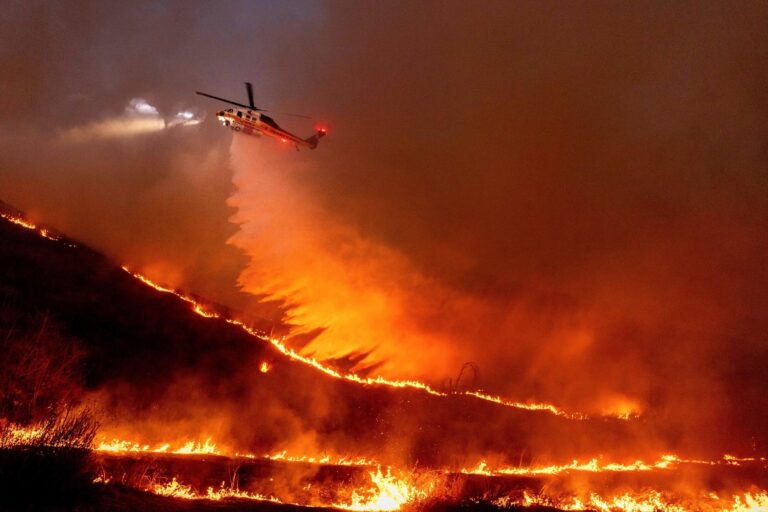Comprehensive Insight into California Wildfires: Impact, Causes, and Support Initiatives
Current Wildfire Situation in California and Its Effects on Local Communities
The wildfire season in California this year has reached unprecedented levels of severity, with vast expanses of land consumed by flames and numerous residents forced to evacuate their homes. The fires have rapidly expanded, driven by prolonged drought conditions and soaring temperatures, resulting in widespread power disruptions, damaged infrastructure, and hazardous air quality that poses serious health risks. Firefighters and emergency personnel are operating under immense pressure to control the blazes, while evacuation mandates have displaced tens of thousands of people. The economic repercussions extend well beyond the immediate destruction, affecting sectors such as agriculture, tourism, and local businesses in vulnerable areas.
The hardest-hit communities are confronting urgent emergency needs alongside the daunting task of long-term recovery. Relief efforts are prioritizing support for at-risk groups, including seniors and economically disadvantaged families who often face greater challenges in rebuilding. Volunteers and aid organizations are actively distributing critical resources like food, potable water, temporary shelter, and medical assistance. Key focus areas include:
- Securing safe and accessible housing and emergency shelters
- Reopening schools and community facilities to restore normalcy
- Providing mental health services to address trauma and stress
- Conducting environmental restoration and soil erosion prevention
| County | Burned Area (Acres) | Number of Evacuations | Containment Status |
|---|---|---|---|
| Los Angeles | 15,200 | 8,500 | 60% |
| Butte | 23,000 | 12,000 | 45% |
| Shasta | 18,900 | 6,400 | 52% |
Understanding Wildfire Origins and Essential Safety Practices
Gaining insight into the root causes of wildfires is vital for effective prevention and preparedness. In California, wildfires frequently originate from multiple sources such as dry lightning strikes, malfunctioning power lines, unattended campfires, and improperly discarded smoking materials. Human activities are responsible for approximately 85% of wildfire ignitions, underscoring the importance of public awareness campaigns aimed at reducing risky behaviors, especially during the arid and hot summer months. Furthermore, climate change intensifies drought conditions and heatwaves, contributing to more frequent and severe fire outbreaks.
Implementing robust safety measures can substantially mitigate the risk to lives and property.Recommended precautions include:
- Establishing defensible zones by removing flammable plants and debris at least 30 feet from residential structures.
- Adhering to local fire regulations, including restrictions on outdoor burning during high-risk periods.
- Preparing emergency kits stocked with essential supplies and clear evacuation plans for fast access.
- Utilizing fire-resistant building materials such as roofing and ember-proof vents to enhance home safety.
| Safety Practice | Benefit |
|---|---|
| Routine clearing of vegetation | Decreases available fuel for fires |
| Installation of smoke alarms | Provides early detection and warning |
| Subscription to emergency alerts | Facilitates timely evacuation |
| Community fire preparedness drills | Improves readiness and response |
World Vision’s Role in Addressing the Wildfire Emergency
In response to the catastrophic wildfires ravaging California, World Vision has rapidly deployed emergency teams to deliver vital assistance to affected populations. Collaborating closely with local officials and partner organizations, World Vision ensures that vulnerable families receive necessary provisions such as clean drinking water, nutritious food, and shelter supplies. Their trauma counseling programs are instrumental in helping displaced children and adults manage the psychological impacts of loss and upheaval.
Beyond immediate relief, World Vision is dedicated to fostering long-term recovery and resilience. Their initiatives include educational outreach on fire safety and preparedness, as well as sustainable projects aimed at rehabilitating damaged ecosystems. Core elements of their response strategy encompass:
- Customized emergency shelter kits designed for families with young children
- Grants supporting community infrastructure restoration
- Psychosocial support services for individuals affected by trauma
- Fire prevention education programs implemented in schools and neighborhoods
How You Can Contribute to Wildfire Relief and Recovery
Supporting wildfire relief extends beyond financial donations. Volunteering your time, expertise, or resources can make a substantial difference in aiding recovery efforts. Engaging with local emergency response teams or partnering with organizations specializing in wildfire assistance are impactful ways to help. In-kind donations such as clothing, food, and medical supplies are frequently enough critical immediately after disasters, but it is indeed critically important to confirm current needs with organizations to avoid surplus or inappropriate items. Additionally, leveraging social media to share verified details can amplify aid efforts by directing resources where they are most needed.
For those aiming to make a lasting impact, supporting ongoing rebuilding projects and mental health services is crucial. Consider these avenues to diversify your support:
- Monetary Donations: Choose reputable organizations that provide openness and detailed reporting on fund allocation.
- Community Fundraising: Organize or participate in local events to raise awareness and financial support.
- Advocacy: Promote policies focused on wildfire prevention and climate resilience at the governmental level.
| Type of Support | Representative Organizations | Impact |
|---|---|---|
| Financial Contributions | World Vision, American Red Cross | Funds immediate relief and reconstruction |
| Volunteering | California Volunteers, Team Rubicon | Provides hands-on disaster response and community aid |
| Advocacy and Awareness | Local government bodies, Environmental advocacy groups | Supports policy progress and preventive measures |
Final Thoughts: Staying Informed and Engaged Amid California’s Wildfire Crisis
As California continues to confront the severe consequences of wildfires, staying informed about the causes, risks, and recovery efforts is essential. Understanding how to contribute effectively can empower individuals and communities worldwide to support those impacted. Organizations like World Vision remain at the forefront, delivering critical aid and fostering resilience. Maintaining vigilance,preparedness,and empathy will be vital as the state faces future wildfire seasons. For further details on how to assist and protect yourself, explore World Vision’s dedicated wildfire relief resources.




